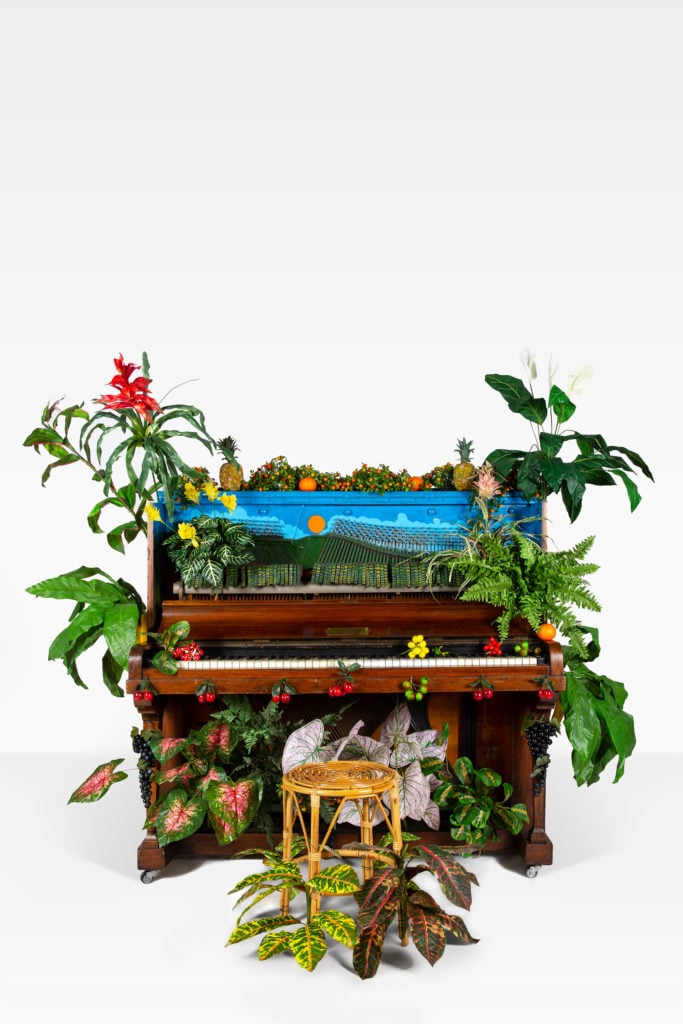A grand piano is turned on its side exposing the outline of a woman’s body, which appears to have smashed right through the top of the lid and landed on the chords underneath. The late feminist artist Carolee Schneemann’s absurdist creation is surrounded by an array of artists’ pianos in Berlin’s KW Institute for Contemporary Art.
The two dozen “prepared pianos” were inspired by a concept coined by the avant-garde American composer John Cage, who would place objects on or between the strings. They were all commissioned by the late Italian collector Francesco Conz, who met Cage in the 1970s. Conz went on to commission more than 60 artists to transform the musical instrument, and a selection of the resulting works are now on show in the German capital.
Dorothy Iannone’s Courting Ajaxander is as sexually charged as any of her paintings or sculptures: on the lid of a grand piano, she has painted a love story. The Belgrade-based conceptual artist Raša Todosijević’s piano is exploding with canes, and a piano by Ben Patterson seems to be overgrown with tropical foliage.
“The piano was a surface like that of a page or a canvas—you can find the attitude of the artist behind each work,” says Gigiotto Del Vecchio, who has co-organized the five-day exhibition, during which some of the pianos will be played. “It’s about the freedom of thinking about something completely new while using the piano to define or to reset something related to each artist’s practice.”

Installation view of “Pause: Broken Sounds / Remote Music—Prepared Pianos from the Archivio Conz Collection.” Photograph by Jens Ziehe. Courtesy of Archivio Conz.
A piano by Nam June Paik exemplifies Cage’s idea. Created in 1975 for Conz, it reduces the instrument to just one note, and sounds like bells ringing when played.
Nearby stands another piece that may be more straightforward to activate. The work is by US artist Allan Kaprow and is a fantastically stretched piano standing nine feet tall. It looks as if it is being played by a sculpted hand, frozen as it slams down on the middle C key.
Over the next five days, performers will activate several of the pieces, few of which are playable in the traditional sense. How do you play a piano made of toilet paper rolls? That work is by the Italian composer Walter Marchetti, who is best known for making use of recordings of toilets flushing and pigs squealing. Another highlight will be Friday evening’s performance by the 72-year-old artist Charlemagne Palestine, a personal friend of Conz’s.
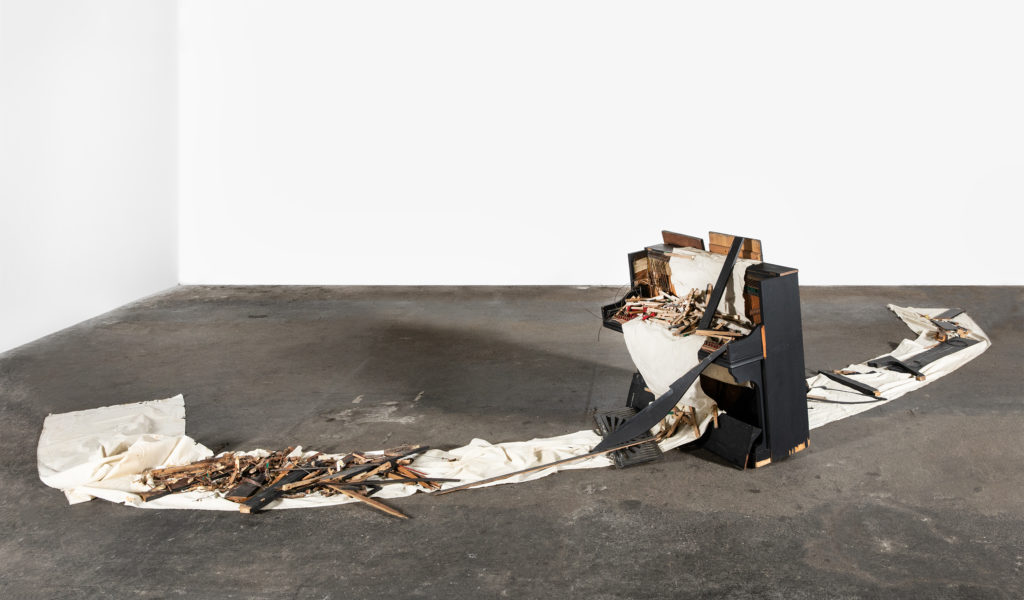
Philip Corner Piano “Worked” (1983). Courtesy Archivio Conz. Photo: Giorgia Palmisano.
The Italian collector was also a major supporter of the Fluxus movement. After his death, his 3,000-strong collection, known as the Archivio Conz, was snapped up by the German banker and billionaire Daniel Hopp. Now housed in a Berlin warehouse, it is being organized, archived, and curated by the former art dealers Del Vecchio and Stefania Palumbo. The event at KW marks one of the first major public displays of a large part of the collection since Conz’s death in 2010.
Conz met Cage during a trip to New York in 1974, an encounter that inspired the prepared piano commissions, and also prompted the Italian to shutter his commercial gallery and set up his “Secret Museum,” a vibrant underground hub for artists from the Fluxus movement and other artists involved in concrete poetry, Lettrism, and Viennese Actionism.
A large portion of the collection is formed by multiples, as Conz spent a good portion of his life working with artists to make editions. The collection includes works by Robert Ashley, Yoko Ono, Claes Oldenburg, and Lee Ufan, among others. There are also fridges and cars, which the archive describes as “festishes” of the collector.
Since 2016, Del Vecchio, Palumbo and their team have been sorting through the vast archive. They are making discoveries all the time, like 100 unique works by Czech artists Josef Hirsal and Bohumilou Grögerovou that were found in a box recently. As the estate becomes completely archived, more finds are sure to follow.
See a selection of the artists’ prepared pianos below.
“Pause: Broken Sounds/Remote Music. Prepared Pianos From the Archivio Conz Collection,” January 15 through January 19, KW Institute for Contemporary Art, Berlin.
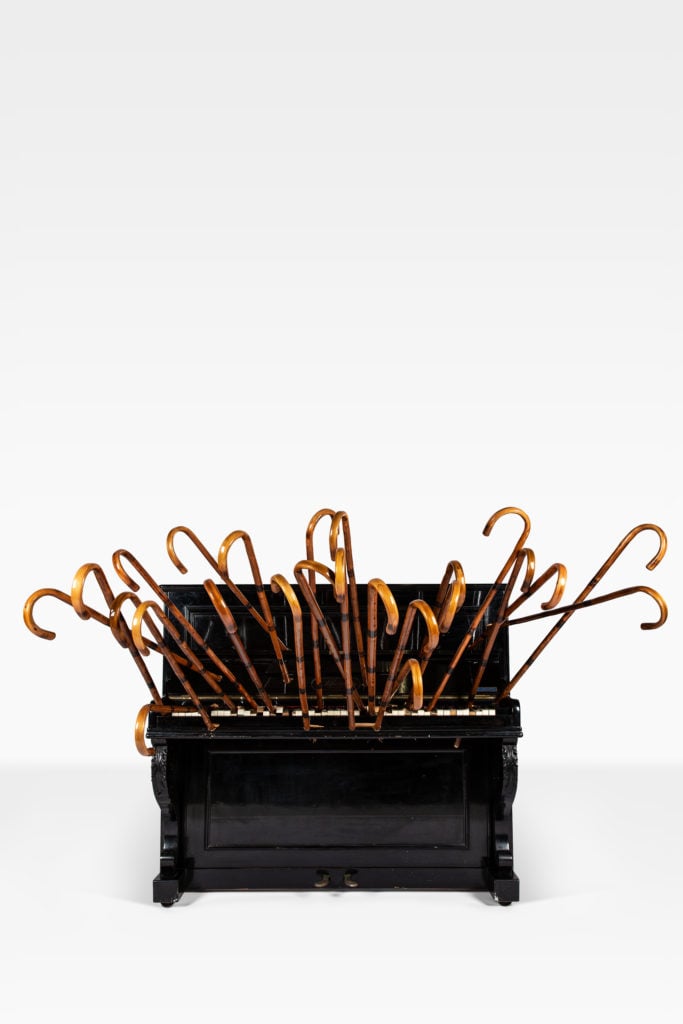
Rasa Todosijevic, Untitled (2004). Courtesy Archivio Conz. Photo: Giorgia Palmisano.
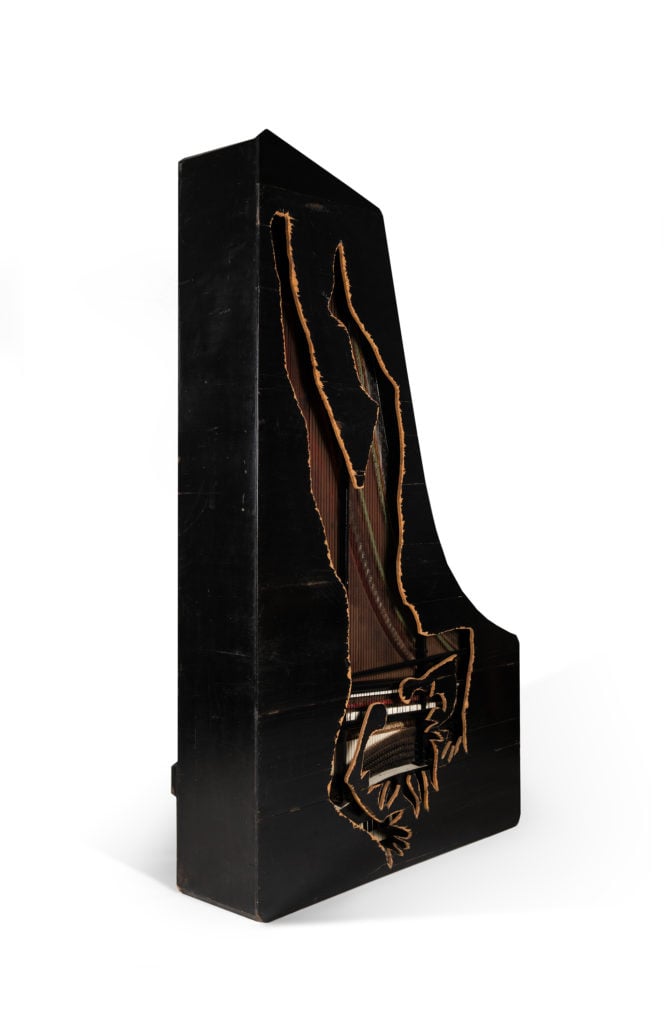
Carolee Schneemann Piano. Courtesy Archivio Conz. Photo: Giorgia Palmisano.
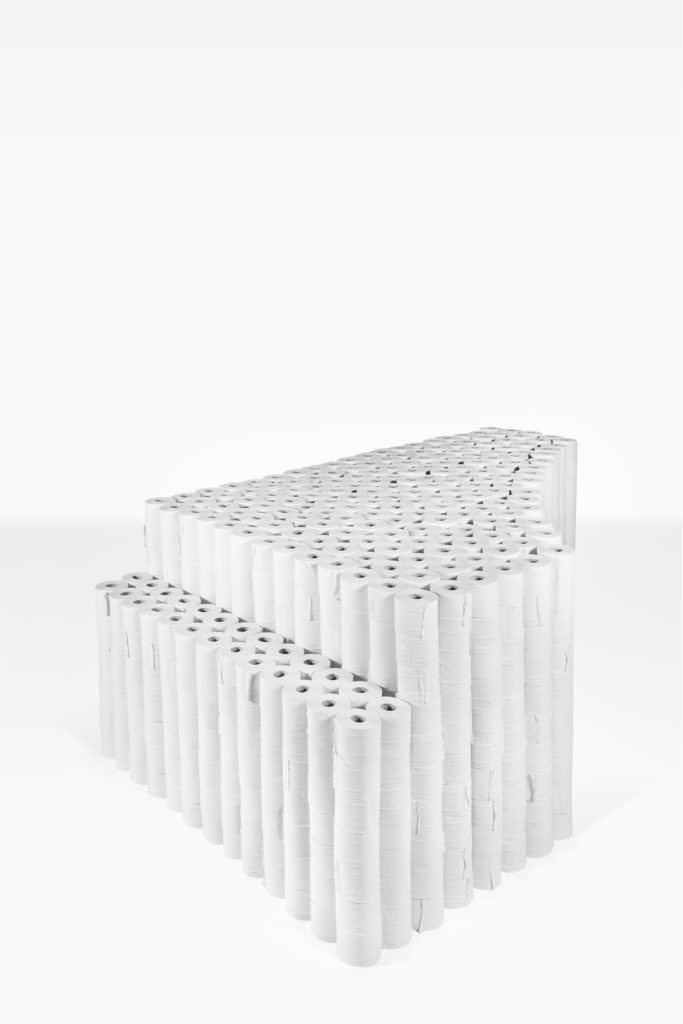
Walter Marchetti, Piano del papel higiénico, (1990). Courtesy Archivio Conz. Photo: Giorgia Palmisano.
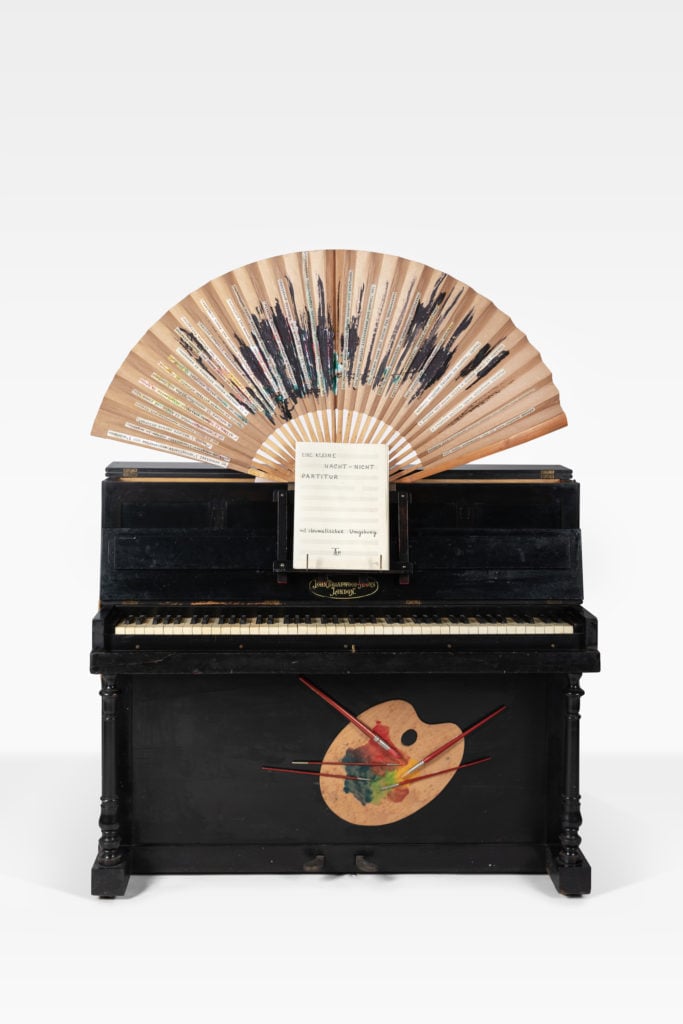
Arrigo Lora-Totino, Eine kleine Nacht – nicht Partitur (1989). Courtesy Archivio Conz. Photo: Giorgia Palmisano.

Dorothy Iannone, (1989/90). Courtesy Archivio Conz. Photo: Giorgia Palmisano
